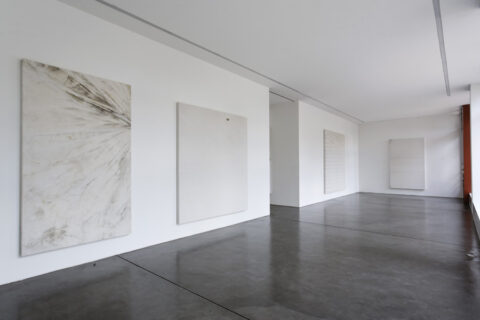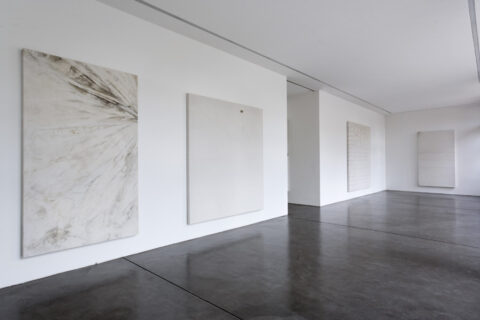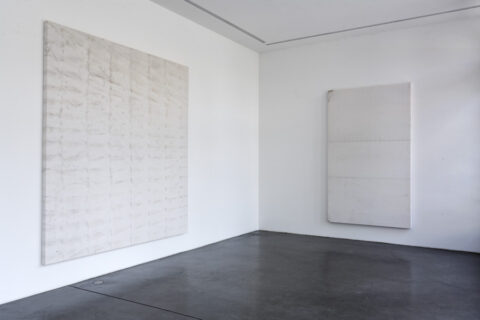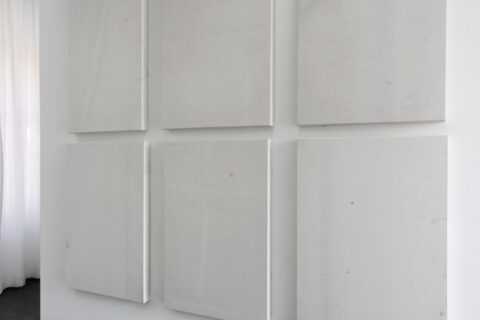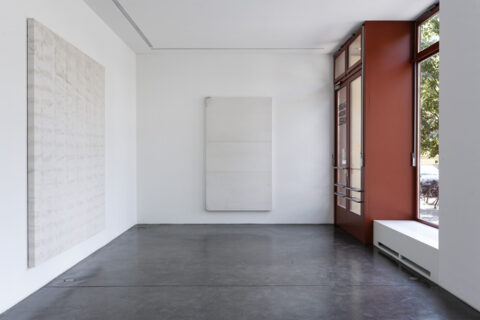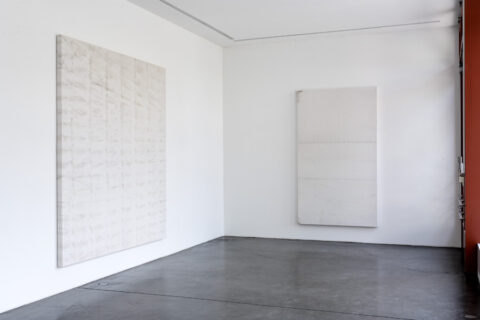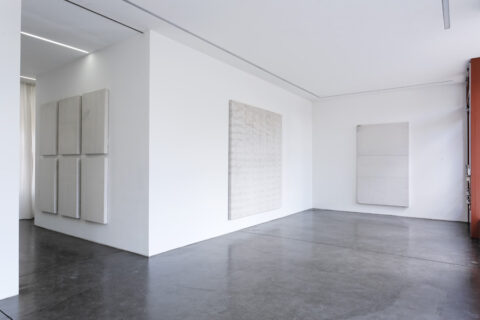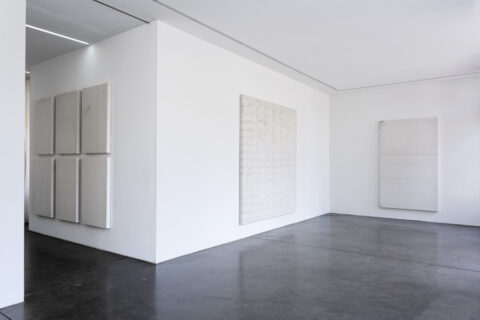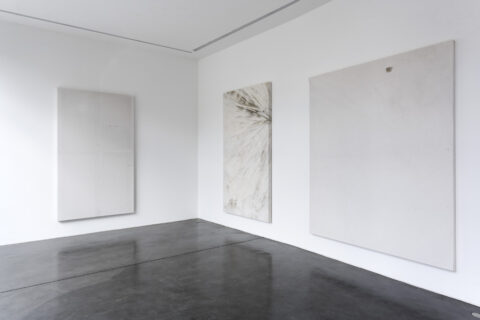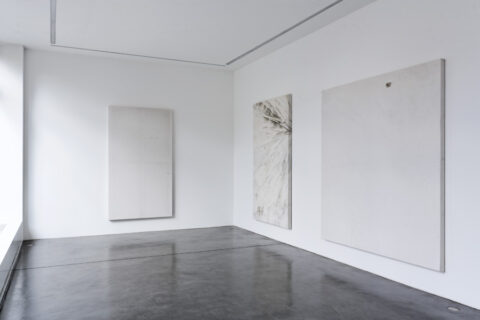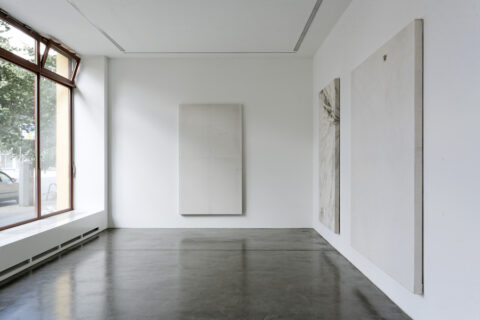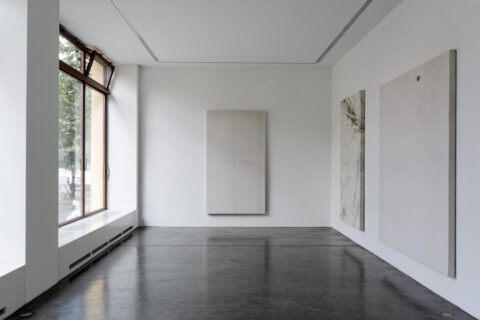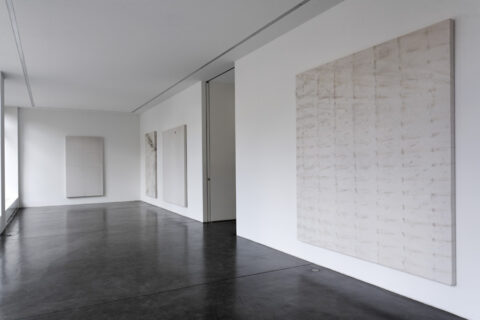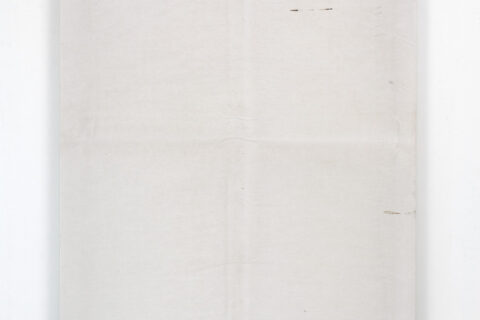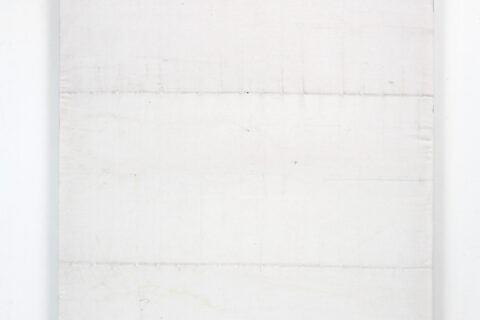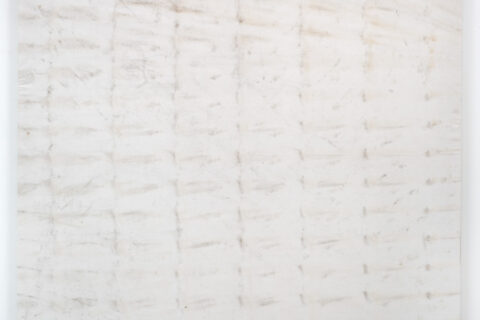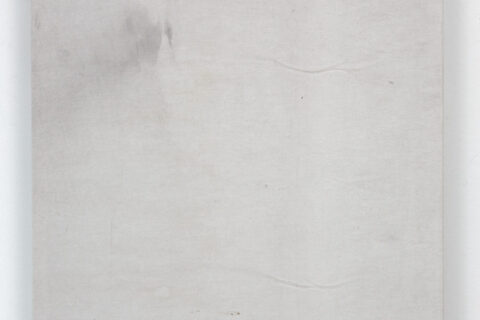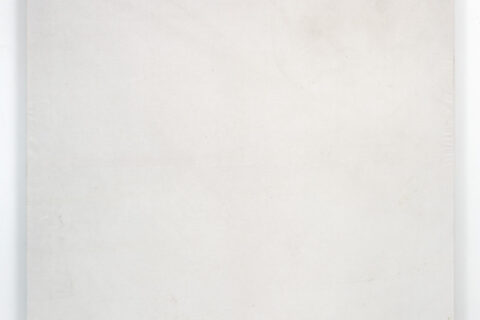Luca Vitone Ich, Rosa Luxemburg Platz
14/06/2008 – 19/07/2008
Eröffnung: 13. Juni 2008, 19-22 Uhr
Ausstellung: 14. Juni - 19. Juli 2008

Luca Vitone
„Ich, Rosa Luxemburg Platz“, 2008
Installationsansicht
Galerie Christian Nagel, Berlin
Photo: Simon Vogel
„Ich, Rosa Luxemburg Platz“, 2008
Installationsansicht
Galerie Christian Nagel, Berlin
Photo: Simon Vogel
„Ich, Rosa Luxemburg Platz“, 2008
Installationsansicht
Galerie Christian Nagel, Berlin
Photo: Simon Vogel
„Ich, Rosa Luxemburg Platz“, 2008
Installationsansicht
Galerie Christian Nagel, Berlin
Photo: Simon Vogel
„Ich, Rosa Luxemburg Platz“, 2008
Installationsansicht
Galerie Christian Nagel, Berlin
Photo: Simon Vogel
„Ich, Rosa Luxemburg Platz“, 2008
Installationsansicht
Galerie Christian Nagel, Berlin
Photo: Simon Vogel
„Ich, Rosa Luxemburg Platz“, 2008
Installationsansicht
Galerie Christian Nagel, Berlin
Photo: Simon Vogel
„Ich, Rosa Luxemburg Platz“, 2008
Installationsansicht
Galerie Christian Nagel, Berlin
Photo: Simon Vogel
„Ich, Rosa Luxemburg Platz“, 2008
Installationsansicht
Galerie Christian Nagel, Berlin
Photo: Simon Vogel
„Ich, Rosa Luxemburg Platz“, 2008
Installationsansicht
Galerie Christian Nagel, Berlin
Photo: Simon Vogel
„Ich, Rosa Luxemburg Platz“, 2008
Installationsansicht
Galerie Christian Nagel, Berlin
Photo: Simon Vogel
„Ich, Rosa Luxemburg Platz“, 2008
Installationsansicht
Galerie Christian Nagel, Berlin
Photo: Simon Vogel
„Ich, Rosa Luxemburg Platz“, 2008
Installationsansicht
Galerie Christian Nagel, Berlin
Photo: Simon Vogel
„Ich, Rosa Luxemburg Platz (Volksbühne)“
Witterungseinflüsse auf Leinwand
115 x 73,5 cm
Photo: Simon Vogel
„Ich, Rosa Luxemburg Platz (Rosa Luxemburg Strasse)“
Witterungseinflüsse auf Leinwand
235 x 135 cm
Photo: Simon Vogel
„Ich, Rosa Luxemburg Platz (Rosa Luxemburg Strasse)“
Witterungseinflüsse auf Leinwand
243 x 142 cm
Photo: Simon Vogel
„Ich, Rosa Luxemburg Platz (Rosa Luxemburg Strasse)“
Witterungseinflüsse auf Leinwand
258 x 235 cm
Photo: Simon Vogel
„Ich, Rosa Luxemburg Platz (Volksbühne)“
Witterungseinflüsse auf Leinwand
118 x 76 cm
Photo: Simon Vogel
„Ich, Rosa Luxemburg Platz (Volksbühne)“
Witterungseinflüsse auf Leinwand
118 x 82 cm
Photo: Simon Vogel
„Ich, Rosa Luxemburg Platz (Weydingerstrasse)“
Witterungseinflüsse auf Leinwand
119 x 79 cm
Photo: Simon Vogel
„Ich, Rosa Luxemburg Platz (Volksbühne)“
Witterungseinflüsse auf Leinwand
120 x 78 cm
Photo: Simon Vogel
„Ich, Rosa Luxemburg Platz (Volksbühne)“
Witterungseinflüsse auf Leinwand
120 x 80 cm
Photo: Simon Vogel
„Ich, Rosa Luxemburg Platz (Weydingerstrasse)“
Witterungseinflüsse auf Leinwand
240 x 140 cm
Photo: Simon Vogel
„Ich, Rosa Luxemburg Platz (Volksbühne)“
Witterungseinflüsse auf Leinwand
241,5 x 237,5 cm
Photo: Simon Vogel
„Ich, Rosa Luxemburg Platz (Weydingerstrasse)“
Witterungseinflüsse auf Leinwand
119 x 79 cm
Photo: Simon Vogel
„Ich, Rosa Luxemburg Platz (Weydingerstrasse)“
Witterungseinflüsse auf Leinwand
233 x 210 cm
Photo: Simon Vogel
Press Release
In der dritten Zusammenarbeit mit der Galerie Christian Nagel, stellt Luca Vitone sein neustes Projekt vor; Ich, Rosa Luxemburg Platz. Es ist ein Werk das sich grundsätzlich mit dem Konzept und dem Wesen eines Ortes beschäftigt. Wie definieren wir die Identität von Orten? Wie werden sie erfahren, dargestellt und erinnert? Welche Bedeutungen haben Orte bzw. Ortsverlust? Mit diesen Fragen setzt sich Luca Vitone in seinem vielschichtigen Werk in den letzten Jahren auseinander und schafft in seinem neuen Kunstprojekt Ich, Rosa-Luxemburg-Platz für die Galerie Christian Nagel eine Arbeit über den Ort und den Status des Monochromen in der Kunst. Die Leinwände, die man nun in der Galerie sieht, unterlagen einem besonderen Schaffensprozess. Vor vier Monaten breitete Luca Vitone weiße Stoffbahnen auf der Volksbühne und den umliegenden Dächern des Rosa-Luxemburg-Platzes aus. Indem Smog, Staub und Luft die willkürlich strukturierte Oberfläche der Leinwand bilden, entsteht ein besonderes Portrait des Platzes.
„Ich habe im gewissen Sinne den Rosa-Luxemburg-Platz dazu eingeladen selbst ein Portrait von sich zu zeichnen. Hinzu kommt, dass diese Bilder eine gewisse Reflexion sind, ein Überdenken der Malerei, mit Hilfe eines der meist praktizierten Modelle des 20. Jahrhunderts: der Monochromie.“
Vitone verwandelt das Monochrome in das Portrait eines bestimmten Ortes. Damit verweist er auf ein Modell, dass sich seit den 1970er Jahren mit den Grundstrukturen und der Analyse des Mediums Malerei befasst, analog etwa zu den Bestrebungen der Minimal Art für Objekte. Gleichzeitig spielt er mit der Zufälligkeit, indem organische Elemente und atmosphärische Veränderungen im Schaffensprozess die Hauptrolle übernehmen. Sie werden zu einer Art Pigmentierung, bzw. Antipigmentierung wie er selbst sagt. So entstehen seine Werke bezeichnenderweise durch Materialien wie Staub, Licht, Asche und Umweltverschmutzung, vor denen normalerweise Bilder geschützt und von denen sie bereinigt werden.
Das Außergewöhnliche an den monochromatischen Werken Vitones ist die Tatsache, dass man sich als BetrachterIn zunächst auf das einlässt, was man zu sehen glaubt, ein monochromes Bild. Doch in Verbindung mit dem Titel Ich, Rosa-Luxemburg-Platz stellt man fest, dass das Wesentliche in dem liegt, was man eben nicht sieht, nämlich der Ort, der gezeichnet hat und gezeichnet ist. Die Wahrnehmung dessen, was die BetrachterInnen auf den ersten Blick zu sehen glauben, ändert sich, sobald diese merken, dass es sich in Wirklichkeit um die Kartierung eines Ortes handelt. In dem aktuellen Fall geht es um einen geschichtsträchtigen Ort, den Rosa-Luxemburg-Platz, das ehemalige Scheunenviertel und Zentrum jüdischen Lebens in Berlin, ein Ort, der von den Wendepunkten deutscher Geschichte maßgeblich gekennzeichnet ist. Dieser schreibt sich in Vitones Kunstwerke ein und es ergeben sich weitere Fragen in Bezug auf den Ort: Wenn sich hier der Ort selbst in die Kunstwerke einschreibt, so verweisen diese wiederum die BetrachterInnen darauf, wie sie selbst sich tagtäglich in die Orte, die sie durchqueren und benutzen einschreiben und diese zu dem formen, was sie sind: Orte der Kultur, des Konsums, Orte der Ausgrenzung, der Auseinandersetzung oder Orte der Begegnung.
----------------------------------------------------------------------------
Introducing his third collaboration with the Christian Nagel Gallery, Luca Vitone´s newest art work is a project called Ich, Rosa-Luxemburg-Platz and centres around the idea and nature of a place. How do we define the identity of places? How do we experience, illustrate and remember them? What significance do we aspire these places or their occasional loss? All these questions are reflected upon in the versatile art works which Vitone has been working on since the 1980ies until now. Ich, Rosa-Luxemburg-Platz essentially revolves around the role and status of the monochrome within art. Hence, the exhibited material is subjected to a unique creational process in which Vitone mounted the plain white canvas on the surrounding roofs of the Rosa-Luxemburg-Platz. Mainly it is the interplay between smog, dust and air which structures the surface of the canvas, thus producing an exceptional portrait created by the square itself.
“In a certain way I invited the Rosa-Luxemburg-Platz to draw a portrait of itself. One could therefore additionally argue that these pictures represent a certain reflexion, a reconsideration of painting as a whole by means of the monochrome, which is one of the most practised styles of the 20th century.”
Vitone transforms the monochrome into the portrait of a certain place thus referring to the basic structures developed in the 1970ies focusing on the analysis of the medium as a kind of analogue for the endeavours of the object within Minimal Art. Simultaneously, Vitone plays with the coincidence, in the sense that the organic elements and the atmospheric changes take over the leading role in the creational process. The anti-pigment coating that results from the latter procedure are effectively a composition of dust, light and pollution which are normally substances hindered or removed from art works.
What is most extraordinary about Vitone´s work is that it primarily insinuates the beholder to look for the obvious, namely contemplate a monochromic picture. However in relation to the title of his art, Ich Rosa-Luxemburg-Platz, it becomes clear that the individual canvas conveys a different perspective, based on that which is invisible and which constitutes the square’s presence within its creational process. Through the acknowledgement of this more profound perspective, the viewer’s perception alters. The Rosa-Luxemburg-Platz which constituted the former Scheunenviertel and the centre of Jewish-life in Berlin, is a place significantly marked by numerous events within the German history. Whence it is a place which by inscribing itself in Vitone´s art works, further on raises new questions about the square itself, such as: If the place inscribes itself onto the art work, then the latter one insinuates the beholder to recognize his/her daily relation or interaction with the square therefore fundamentally contributing to the entity of the place itself.
